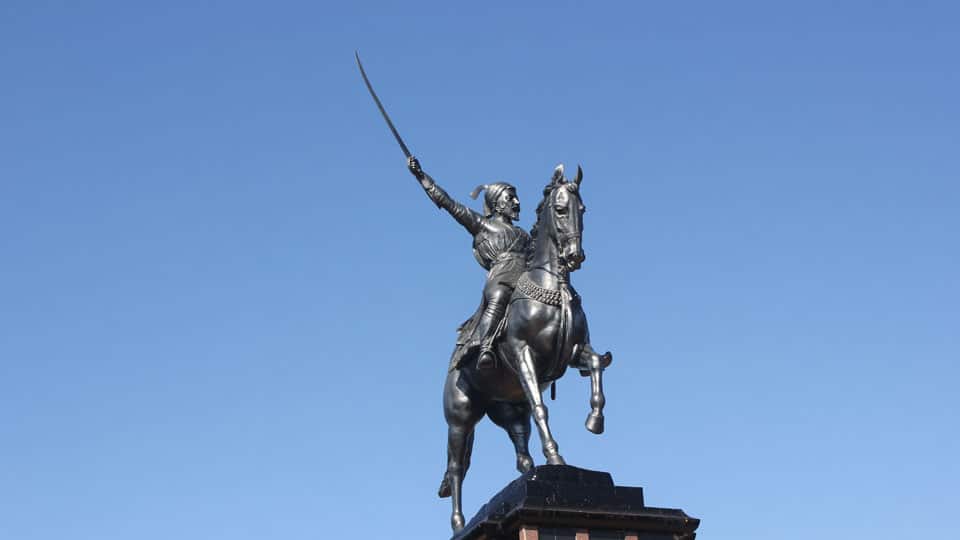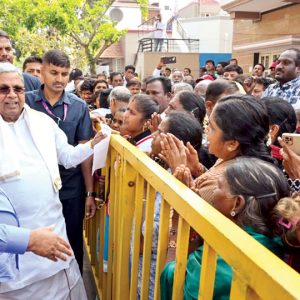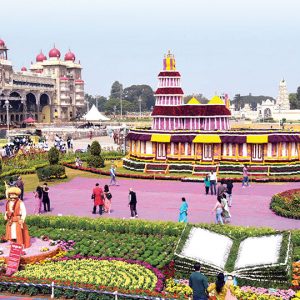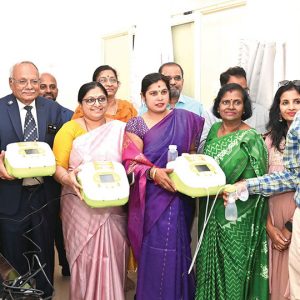
[Continued from yesterday]
Like every royal family, Shivaji’s family too claimed royal descent. However, there is a claim for double descent — one from King Porus that was mentioned earlier and another from the Ranas of Udaipur. It seems a quirk of history that just as King Porus fought Alexander The Great, Chhatrapati Shivaji Maharaj had to fight another mighty ruler, Emperor Aurangazeb.
In Udaipur, Shivaji’s ancestor, a Prince named Sajan Singh, possessed a fiefdom (Zamindari) known as Bhosavat. The family name ‘Bhosale’ of Shivaji was derived from this Zamindari of Bhosavat. When a Muslim Sultan conquered Udaipur, Sajan Singh fled from the kingdom to seek his fortune as a soldier in South of India, naturally as a mercenary. Travelling South, he settled in the Marathi-speaking country. Being a good maker of swords to fight the wars, Sajan Singh was providing swords to Muslim rulers of that region. These Muslim rulers owed allegiance to the Emperors of Delhi.
The most powerful kingdom at that time was known as the Bahamani kingdom. With the Muslim emperors in Delhi becoming weak rulers over two centuries with changed dynasties, the once powerful Bahamani kingdom broke up into five weak States — Golconda, Bijapur, Ahmednagar, Berar and Bidar. At this point in time, 1526, the throne of Delhi was occupied by Babur, the first of the great Mughal dynasty.
With the rise of Mughals, the five Sultans of the divided Bahamani kingdom enter into an alliance and destroy entirely the Hindu Vijayanagar empire in 1565. However, before the might of the Mughals, these Sultans were too weak and the Mughals annexed Bidar and Berar. Only Golconda, Bijapur and Ahmednagar remained as kingdoms.
This was the political situation where Shivaji’s ancestors lived. Shivaji’s grandfather Maloji, a soldier of fortune, was supplying swords to the Sultan of Ahmednagar and was also serving as a courtier. He married the sister of a prominent courtier of the Sultan of Ahmednagar.
It was here in Ahmednagar, Shivaji’s father Shahaji was born in 1594. History says that the Ahmednagar Sultan’s Court was full of Maratha officials among whom was a wealthy land owner called Lakkoji. He had a daughter by name Jijabai, who was married to Shahaji (Shivaji’s father) with the blessings of the Sultan. Soon, Shahaji and Jijabai had a son called Shambaji. Shahaji (Shivaji’s father) followed the footsteps of his father Maloji and joined the service of the Sultan of Ahmednagar.
However in 1636, the kindgom of Ahmednagar collapsed and Shahaji (Shivaji’s father) enlisted in the army of Bijapur. The Zamindari granted to his father Maloji was reaffirmed to his name by the Sultan of Bijapur. While everything looked good for Shahaji (Shivaji’s father), Mughal emperor Shah Jahan moved his forces Southwards to attack Bijapur. Interestingly, Shahaji (Shivaji’s father) resisted the imperial advance of Shah Jahan’s Army towards his lands, Zamindari or fiefdom without success.
Fearing capture by the Mughal Army, Shahaji (Shivaji’s father) rode Southwards to Bijapur taking with him his baby son Shambaji, but abandoning not only his lands but also his wife Jijabai, who was again pregnant, carrying future Shivaji. Helpless, Jijabai took refuge in Shivner, a fort in the hill country with a few faithful retainers.
On Feb.19, 1630, Jijabai gave birth to her second son, whom she called Shivaji. All Hindu rituals were followed while naming the child with some other man deputising for the child’s father Shahaji. One of the rituals followed was letting honey fall through a gold ring upon the child’s mouth. The name Shivaji was chosen after the name of the local deity Shiva.
In the meanwhile, the Mughal Commanders were still searching for Shivaji’s father Shahaji and when they learnt he had left the district, they began to hunt for his wife and child. Life moved on at Shivner for six years when suddenly Jijabai’s hiding place was betrayed to the Mughals by a local person and she was captured.
Interestingly, Mughals could not find Shivaji. Perhaps the alarm was given in time for a servant to snatch up the child and disappear from the back gates of the fort into the jungle while Jijabai kept the Mughal soldiers engaged arguing with them.
Jijabai was later housed in a fortress at a place known as Trimbak. It is said that for three long years, devoted servants carried Shivaji with them and lived in the hills to avoid the Mughal soldiers. Historian Dennis Kincaid makes an interesting observation here about the way Hindus accepted Muslim domination. He says: “While most well to do Hindus had come to accept Muslim domination as inevitable and had been seduced by the luxury and comfort of Muhammadan Courts, Shivaji spent his earlier childhood (not among such luxury-loving Hindus) but among men not yet subdued, among wild tribesmen and in lonely forest villages.” Naturally to Shivaji, the Musalmans were the people who had taken his mother away and who followed him relentlessly like demons during his childhood.
When Shivaji was 10-year-old living in his mountain abode with tribals, his mother Jijabai escaped from her fortress where she was confined by the Mughal soldiers. How she managed to escape, nobody knew but she joined her son in the hills. It was a miraculous reunion of long separated mother and son that looked like the result of her prayers.
The military confrontation between Mughal forces of Shah Jahan and the Sultan of Bijapur were continuing and the Mughals had abandoned their search for Shivaji. Finally there was peace and hope for Shivaji, his father and mother when a Treaty was signed in 1637 between the Bijapur Sultan and Mughal Emperor Shah Jahan under the terms of which the Sultan acknowledged Shah Jahan as suzerain and agreed to pay tribute to the Emperor. The war was over. Shivaji’s father Shahaji immediately sent his men to bring his son Shivaji and Jijabai to Bijapur.
[To be continued]
e-mail: [email protected]








Recent Comments